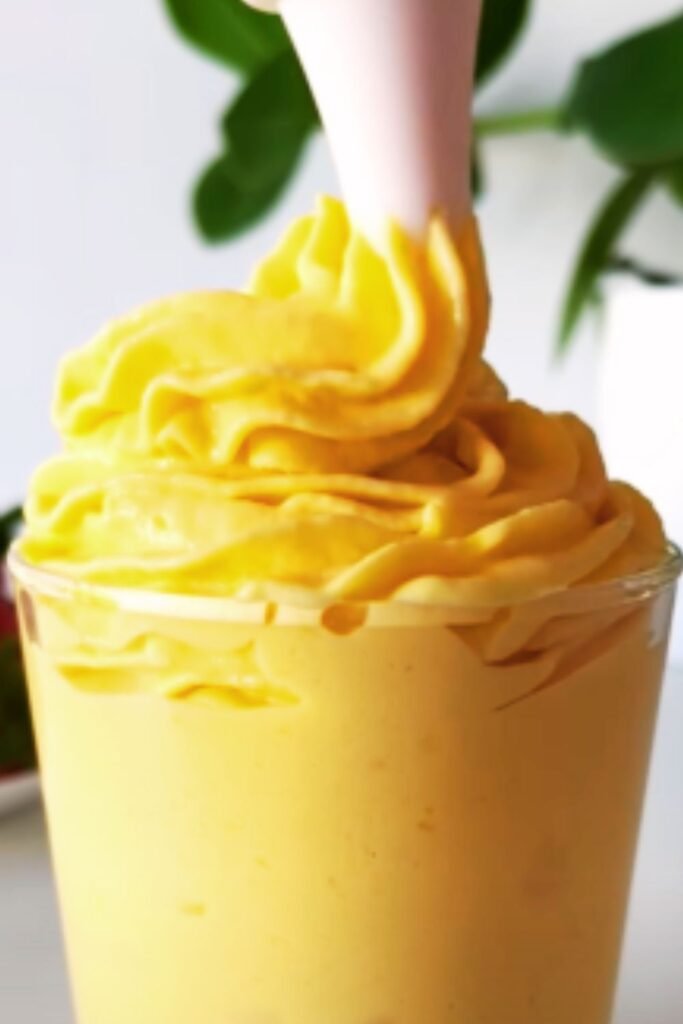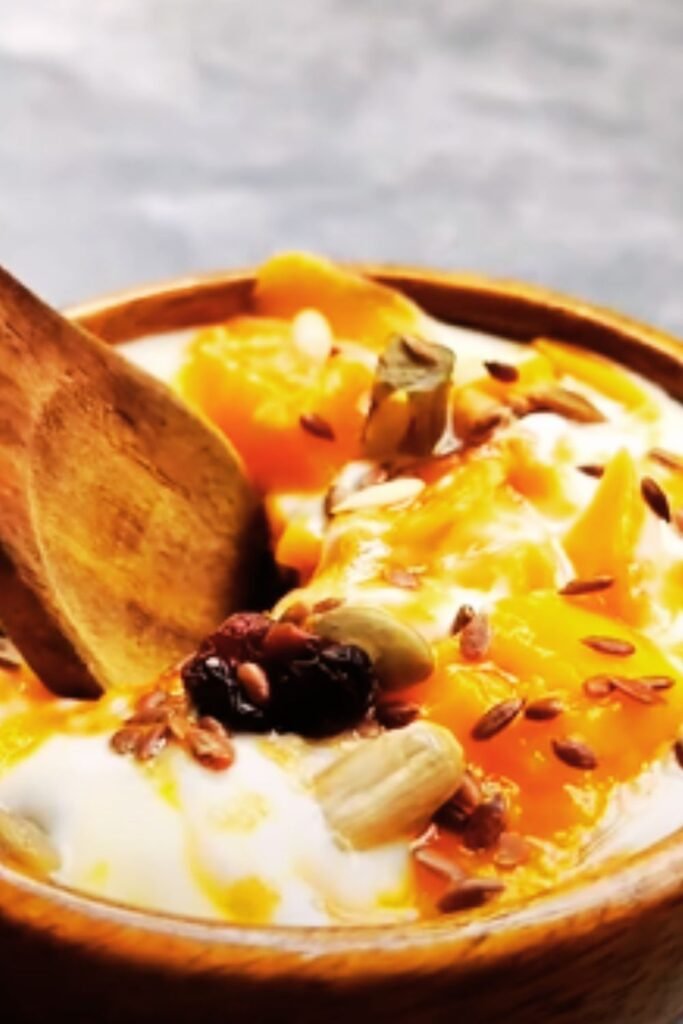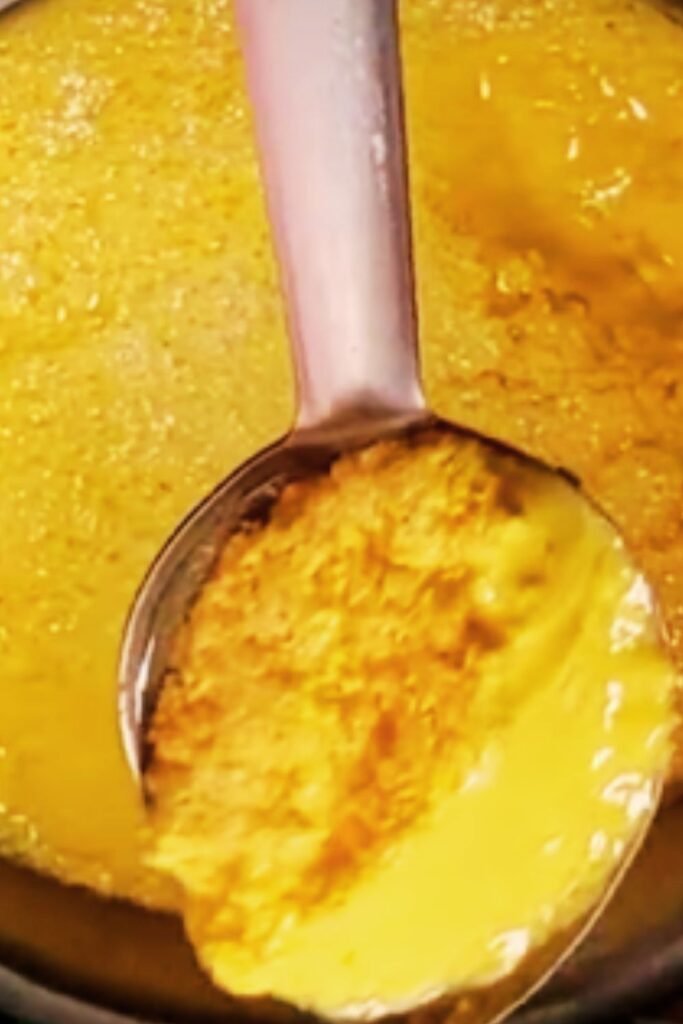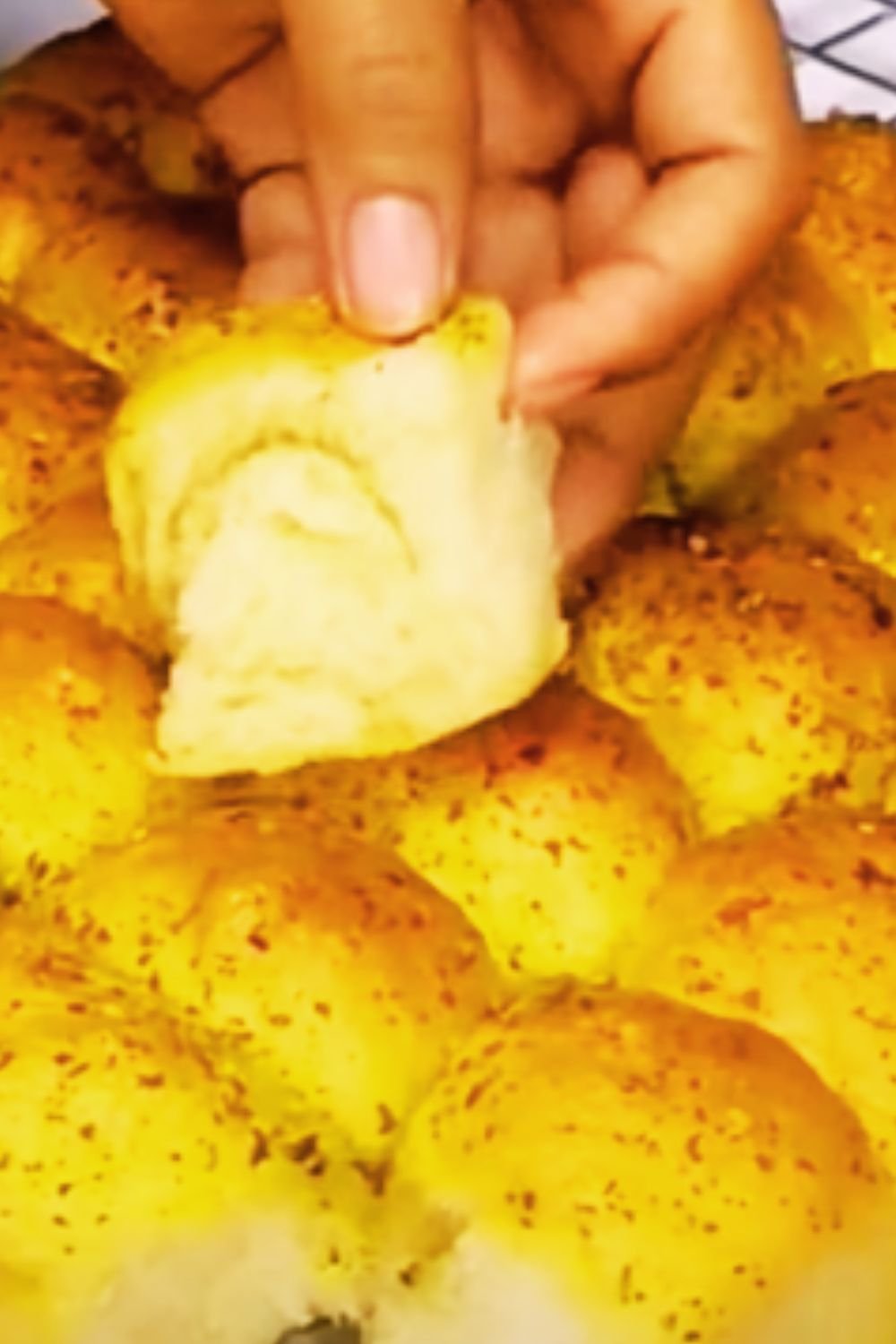There’s something magical about transforming fresh, ripe mangoes into a silky, luscious curd that captures the essence of this tropical fruit. I’ve been making fruit curds for years, but my mango curd recipe has become a family favorite that disappears almost as quickly as I can make it. In this article, I’ll share my foolproof technique for creating the perfect homemade mango curd that balances sweet and tangy flavors in a smooth, spreadable consistency.
What Is Mango Curd?
Mango curd is a fruit spread similar to lemon curd but made with fresh or frozen mango pulp instead of citrus juice. It’s a versatile preserve that combines the tropical sweetness of mangoes with the rich creaminess of butter and eggs. The result is a smooth, thick spread with an intense mango flavor that’s both sophisticated and comforting.
Unlike traditional fruit jams, curds contain eggs and butter, giving them their characteristic silky texture and rich mouthfeel. The eggs help thicken the mixture through gentle cooking, while the butter adds a luxurious finish and helps extend its shelf life.
Why Make Mango Curd At Home?
I started making my own mango curd after being disappointed with store-bought versions that often contained artificial flavors and preservatives. Here’s why I believe homemade is always superior:
- Pure Mango Flavor: Homemade curd contains real mango pulp with no artificial flavors.
- Customizable Sweetness: You control the amount of sugar, adjusting to your taste preferences.
- No Preservatives: Just clean, simple ingredients you can pronounce.
- Brighter Color: The natural vibrancy of mangoes shines through without added food coloring.
- Economical: When mangoes are in season, making curd is a cost-effective way to preserve their flavor.
- Gift-Worthy: Homemade mango curd makes a thoughtful handcrafted present for friends and family.
Choosing The Perfect Mangoes
The key to exceptional mango curd starts with selecting the right mangoes. I’ve learned through much trial and error that not all mango varieties work equally well for curd-making.
Best Mango Varieties for Curd
Alphonso : Known as the “king of mangoes,” these have an intense flavor and low fiber content, making them ideal for smooth curds.
Ataulfo (Honey Mango) : My personal favorite for curd-making due to their buttery texture, sweet flavor, and minimal fiber.
Kent : Large with a sweet, juicy flesh that blends well into a smooth purée.
Tommy Atkins : More widely available in U.S. supermarkets, these work well when ripe but may need additional straining.
Ripeness Test
For the most flavorful curd, use mangoes that are:
- Fragrant with a sweet aroma near the stem
- Slightly soft when gently pressed
- Displaying their characteristic color (varies by variety)
- Free of black spots or shriveled skin
If your mangoes aren’t quite ripe, place them in a paper bag with a banana for 1-2 days to speed up ripening.
Essential Ingredients & Equipment

Ingredients
For approximately 2 cups of mango curd:
- 2 cups fresh mango pulp (about 3-4 ripe mangoes)
- ¾ cup granulated sugar
- 4 large eggs
- 2 egg yolks
- ½ cup unsalted butter, cut into small cubes
- 2 tablespoons fresh lemon juice
- ¼ teaspoon salt
Kitchen Equipment
To ensure success, I recommend having these items ready:
- Heavy-bottomed saucepan: Prevents scorching and ensures even heating
- Fine mesh strainer: Essential for achieving that silky-smooth texture
- Food processor or blender: For creating a smooth mango purée
- Instant-read thermometer: Takes the guesswork out of knowing when your curd is done
- Heat-resistant silicone spatula: For continuous stirring
- Glass jars with lids: For storage
- Measuring cups and spoons: For accuracy
Step-by-Step Method
Through years of perfecting this recipe, I’ve developed a method that consistently produces smooth, delicious mango curd with minimal risk of curdling or lumps.
1. Prepare the Mango Purée
First, we need to transform whole mangoes into smooth pulp:
- Peel the mangoes and cut the flesh away from the pit.
- Place the mango chunks in a food processor or blender.
- Blend until completely smooth, with no fibrous bits remaining.
- Measure out 2 cups of purée for the recipe.
- If using very sweet mangoes, add the lemon juice now to balance the flavor.
Pro tip: If your mango purée seems fibrous, pass it through a fine-mesh sieve before proceeding.
2. Mix Base Ingredients
Creating the right base mixture is crucial for a smooth result:
- In a medium bowl, whisk together the eggs and egg yolks until well combined.
- Gradually add the sugar while whisking, until the mixture becomes pale yellow.
- Whisk in the mango purée until fully incorporated.
- Add salt and any remaining lemon juice.
3. Cook the Curd
This is the most critical step that requires attention and patience:
- Transfer the mixture to a heavy-bottomed saucepan.
- Heat over medium-low heat, stirring constantly with a silicone spatula.
- Continue cooking and stirring, making sure to scrape the bottom and sides of the pan.
- Cook until the mixture thickens and reaches 170°F (77°C) on an instant-read thermometer.
- Remove from heat immediately when the curd coats the back of a spoon and leaves a clear trail when you run your finger through it.
Important: Never allow the mixture to boil, as this will cause the eggs to scramble.
4. Add Butter and Finish
Adding butter at the end creates that signature silky texture:
- Remove the pan from heat and add the cubed butter, a few pieces at a time.
- Stir until each addition of butter is fully melted and incorporated before adding more.
- Once all butter is incorporated, strain the curd through a fine-mesh sieve into a bowl.
- Press plastic wrap directly onto the surface of the curd (to prevent a skin from forming).
- Allow to cool completely at room temperature before refrigerating.
Storage and Shelf Life
Proper storage is essential for maintaining the quality and safety of your homemade mango curd:
| Storage Method | Temperature | Container | Shelf Life | Notes |
|---|---|---|---|---|
| Refrigerator | 35-40°F (2-4°C) | Airtight glass jar | 1-2 weeks | Best flavor in first week |
| Freezer | 0°F (-18°C) | Freezer-safe container with ½-inch headspace | Up to 3 months | Thaw in refrigerator overnight |
| Water Bath Canning | Processing time varies | Sterilized glass jars | Up to 3-4 months refrigerated | Not recommended for long-term shelf storage due to low acidity |
Food Safety Note: Unlike traditional jams and jellies, fruit curds contain eggs and butter, making them more perishable. Always refrigerate promptly and watch for any signs of spoilage.
Troubleshooting Common Issues
Even experienced curd-makers sometimes encounter challenges. Here’s how I solve the most common problems:
Problem: Curd is too runny
Solution: It likely needs more cooking time. Return to low heat and continue stirring until it thickens. Remember that curd will also thicken more as it cools.
Problem: Curd has scrambled egg bits
Solution: You’ve likely overheated the mixture. Strain through a fine mesh sieve immediately to remove any solid bits. Next time, keep the heat lower and stir more constantly.
Problem: Grainy texture
Solution: This usually happens when sugar hasn’t fully dissolved. Make sure to whisk the sugar with eggs thoroughly before cooking, and consider using superfine sugar next time.
Problem: Mango flavor isn’t pronounced enough
Solution: Use more concentrated mango purée (you can reduce it gently before adding to the recipe), or add ¼ teaspoon of pure mango extract.
Problem: Curd separated during storage
Solution: This is likely due to improper emulsification. Make sure butter is fully incorporated, and consider using an immersion blender for a more stable emulsion.
Creative Uses for Mango Curd

While delicious simply spread on toast or scones, mango curd’s versatility extends far beyond the breakfast table. Here are my favorite ways to use this tropical delight:
Baking Applications
- Fill tart shells for quick individual desserts
- Use as a layer in cakes or cupcakes
- Swirl into cheesecake batter before baking
- Sandwich between macarons or cookies
- Fill crepes or pancakes for a special breakfast
No-Bake Desserts
- Layer with whipped cream and crushed cookies for a trifle
- Fold into whipped cream for a quick mousse
- Use as a topping for pavlova with fresh berries
- Swirl into vanilla ice cream before freezing
- Spoon over Greek yogurt with granola for breakfast parfaits
Savory Pairings
- Serve alongside cheese platters (pairs beautifully with mild goat cheese)
- Use as a glaze for grilled chicken or fish
- Mix with olive oil and vinegar for a tropical salad dressing
- Spread on crackers with prosciutto for a sweet-savory appetizer
Flavor Variations
Once you’ve mastered the basic mango curd recipe, try these delicious variations:
Mango-Passionfruit Curd
Add the pulp of 3-4 fresh passionfruit to the mango purée for an extra tropical flavor dimension and delightful crunchy seeds.
Mango-Coconut Curd
Replace half the butter with solid coconut cream and add ¼ teaspoon coconut extract for a Caribbean-inspired spread.
Spiced Mango Curd
Add ¼ teaspoon each of ground cardamom and ginger, plus a pinch of saffron threads to create an Indian-inspired version.
Mango-Lime Curd
Replace the lemon juice with lime juice and add 1 teaspoon of lime zest for a more citrus-forward flavor profile.
Serving Suggestions

The versatility of mango curd makes it perfect for any meal of the day:
Breakfast Ideas
- Spread on toast, English muffins, or bagels
- Dollop onto oatmeal or overnight chia pudding
- Serve with buttermilk pancakes or waffles
- Swirl into plain yogurt with granola
- Use as a filling for crepes
Afternoon Tea Pairings
- Serve with scones and clotted cream
- Fill small tart shells for elegant tea sandwiches
- Spread on mini pound cake slices
- Offer as a dip for shortbread cookies
- Sandwich between vanilla macaron shells
Dessert Applications
- Use as a filling between cake layers
- Serve alongside fresh fruit platter
- Top vanilla ice cream or gelato
- Fill profiteroles or cream puffs
- Swirl into cheesecake before baking
Dietary Adaptations
I’ve experimented with making mango curd accessible for various dietary needs without sacrificing flavor:
Vegan Mango Curd
Replace eggs with 3 tablespoons of cornstarch dissolved in plant milk, and substitute vegan butter. The texture will be slightly different but still delicious.
Sugar-Free Version
Substitute a granulated sweetener like erythritol or allulose that measures like sugar. Monk fruit blend also works well without affecting the texture.
Dairy-Free Option
Use coconut oil instead of butter for a dairy-free version with tropical undertones.
Low-Fat Alternative
Replace half the butter with Greek yogurt for a tangier, lower-fat version (note: this will reduce shelf life).
Frequently Asked Questions
Q: Can I use frozen mango instead of fresh? Yes, frozen mango chunks work well for this recipe. Thaw completely, drain excess liquid, and proceed as normal. You may need to adjust sugar slightly as commercial frozen mango is sometimes less sweet.
Q: Why did my mango curd turn out green instead of yellow? Green tints usually indicate you used mangoes that weren’t fully ripe. The chlorophyll in underripe mangoes can affect the color. For the best color, use fully ripened mangoes with deep yellow or orange flesh.
Q: How do I know when my mango curd is thick enough? The curd should coat the back of a spoon and leave a clear trail when you run your finger through it. If using a thermometer, it should read 170°F (77°C). Remember that it will continue to thicken as it cools.
Q: Can I double the recipe? Yes, but use a larger pot and expect a longer cooking time. Be extra vigilant about stirring to prevent scorching on the bottom.
Q: Is it possible to can mango curd for longer shelf life? Traditional water bath canning isn’t recommended for long-term shelf storage due to the low acidity and presence of eggs and butter. However, you can process in a water bath for 10 minutes, which will extend refrigerated shelf life to 3-4 months.
Q: Why add lemon juice when we want mango flavor? The acidity in lemon juice balances the sweetness, brightens the mango flavor, and helps with preservation. It’s similar to how a pinch of salt enhances sweetness in desserts.
Q: My mango curd has tiny white specks after refrigeration. Is it spoiled? Those are likely small bits of solidified butter, which can happen if the butter wasn’t fully emulsified. It’s still safe to eat – simply warm gently and stir to reincorporate.
Q: Can I reduce the sugar in this recipe? You can reduce the sugar by up to 25% without significantly affecting the texture, especially if your mangoes are very sweet. However, sugar does contribute to preservation, so reduced-sugar versions will have a shorter shelf life.
Summing Up: The Joy of Homemade Mango Curd
Making mango curd from scratch connects us to the simple pleasure of transforming fresh fruit into something extraordinary. Beyond the technical aspects of cooking, there’s something deeply satisfying about capturing the essence of perfectly ripe mangoes in a jar – preserving their sunshine flavor to brighten even the dreariest days.
I encourage you to try this recipe when mangoes are at their peak of ripeness and flavor. The process itself is relaxing once you get the hang of it, and the resulting golden curd is versatile enough to elevate everything from your morning toast to your most elegant desserts.
Remember that perfecting your technique may take practice, but even less-than-perfect attempts will be delicious. The real magic of homemade mango curd lies in its ability to transport you to tropical shores with just one spoonful – a little jar of sunshine ready whenever you need a flavorful escape.

